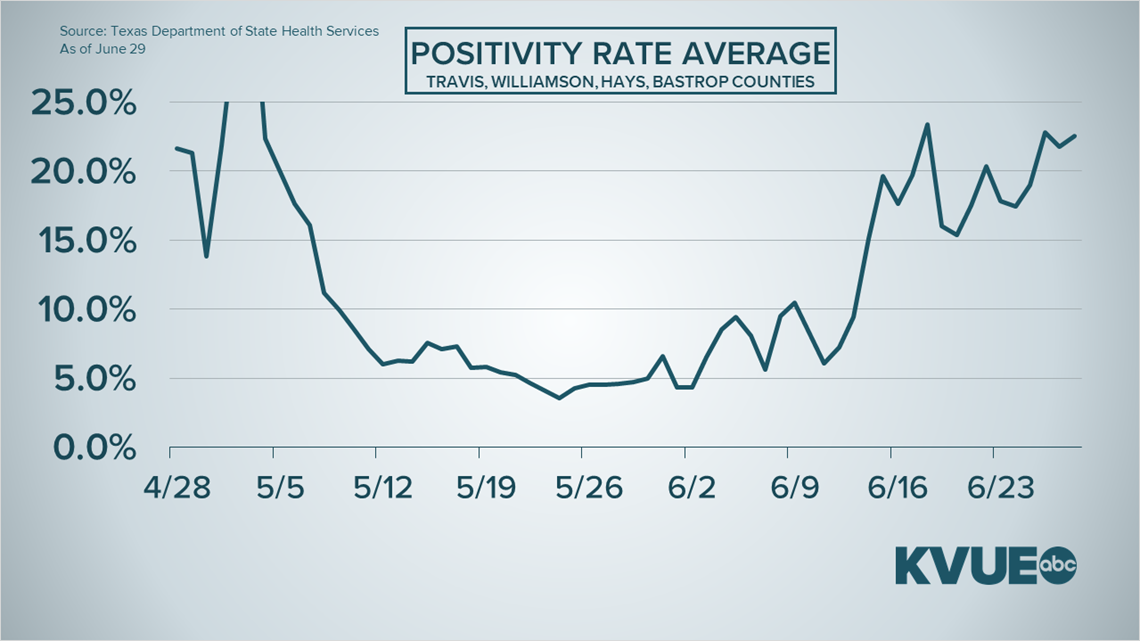AUSTIN, Texas — In Friday's White House Coronavirus Task Force meeting, Vice President Mike Pence showed a graphic with a harrowing statistic for the city of Austin and also the state of Texas: Austin had the highest positivity rate in the nation over the previous seven days.
Not only that but Texas' other three large metro areas – Houston, Dallas and San Antonio – were also in the top five. Texas had four of the top five positivity rates in America over those seven days. Houston ranked third-highest in the nation, Dallas was fourth and San Antonio was fifth.
But what does the positivity rate represent? Why is that important?
The positivity rate is a metric which health authorities are using, where the number of positive test results is divided by the number of total tests administered, essentially giving a percentage of COVID-19 positive diagnoses.


Austin is in the midst of a record-breaking number of new cases being reported.
KVUE reported that this past Saturday, Sunday and Monday saw records broken for the number of new, daily cases of COVID-19 in Travis County, according to data from Austin Public Health. A record daily high of 728 new cases was reported Saturday, with 636 new cases reported Sunday and 508 more reported Monday. Based on a 14-day moving average, the number of virus infections has increased 230%, while testing is up 57%, based on a KVUE data analysis.
RELATED:
The seven-day average for Austin's positivity rate has hovered around 22% as of late (22.8% on June 27, down slightly on June 28, but still north of 21%, nearly 22% on June 29).


With the recent spike in cases, Austin's top health authority said at an Austin City Council meeting on June 29 that he is "at the verge" of recommending another round of "stay-home" orders.
For context, Gov. Greg Abbott's original benchmark he considered a "red flag" regarding state closures in Texas was a 10% positivity rate.
"If you were to go back earlier in the April timeframe, you would have seen that the positivity test rate was closer to 10%. In fact, sometimes over 10%," Abbott said. "If the positivity test rate is more than 10%, that's one of those red flags that we begin to look at, not if it's just a one-off day of testing more than 10% positive, but if there are multiple days that a trend line begins."
(NOTE: This positivity rate explainer below was reported in early May before Austin's positivity rate spiked to over 20%)
PEOPLE ARE ALSO READING:

